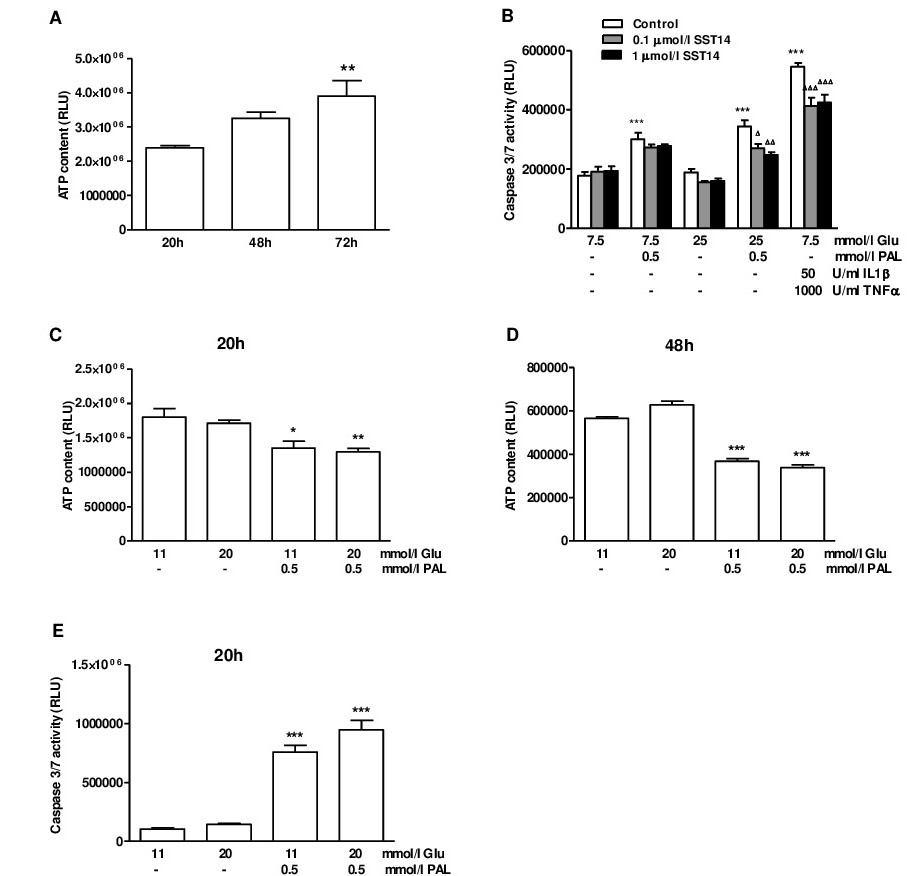Fig. 5. Effect of SST14 on MIN6 and INS1 beta cell viability and apoptosis following exposure to gluco- and/or lipotoxicity. To investigate the role of SST14 in hyperglycaemia- and glucolipotoxicity-induced apoptosis, MIN6 cells were maintained in prolonged culture at 7.5 mmol/l glucose (Glu). Initially the rate of cell growth decreased, however, after approximately three weeks cell expansion resumed, as shown by an increase in ATP content and thus number of metabolically active cells with time (A). The cells were subsequently pre-treated for 48h with SST14 followed by 20h exposure to 25 mmol/l glucose, 0.5 mmol/l palmitate (PAL) or a combination of both, or to IL1β and TNFα all with or without SST14 (B). INS1 cells were exposed to 20 mmol/l glucose, 0.5 mmol/l palmitate (PAL) or a combination of both for 20 (C, E) or 48h (D) and cell viability (C, D) or apoptosis (E) was assessed by measurement of ATP content and caspase 3/7 activity, respectively. *P<0.05, **P<0.01, ***P<0.001 vs control (one way ANOVA, followed by Bonferroni's multiples comparison test). Data shown in each panel are representative of three separate experiments.
